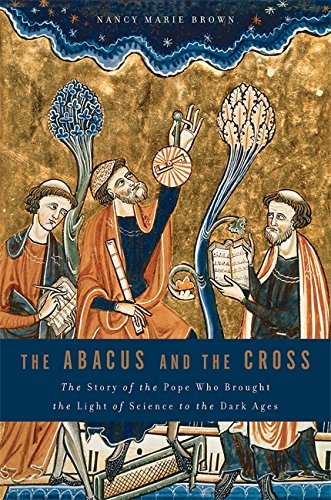|
The Abacus and the Cross: The Story of the Pope Who Brought the Light of Science to the Dark Ages
By Nancy Marie Brown Published in October 2012 328 Pages Thibault’s Score: 4/5 The Abacus and the Cross is a fascinating biography of one of the great forgotten pioneers of mathematics: Pope Sylvester II (AKA Gerbert of Aurillac). He was pope at the turn of the first millenium, and lived approximately from 946 - 1003 AD. Pope Sylvester II was a French monk who was educated in Islamic Spain. There, he learned the techniques of Islamic astronomy and mathematics. Notably, he helped import two very important technologies to Europe: the astrolabe and the abacus. The astrolabe is a device that can help predict lunar and solar movements. It provided a rational, as opposed to superstitious, explanation of how lunar eclipses worked. This helped relieve the fears of the people, paving the way for modern astronomy. More importantly, Pope Sylvester II imported the abacus. The abacus is a device with counting beads which makes it much easier to visualize very large numbers. The abacus enabled more complicated mathematics by helping people think in decimal terms. Another innovation that Pope Sylvester II helped import from the Islamic world was the use of Arabic numerals. Roman numerals do not lend themselves towards mathematics. Arabic numerals correspond to decimal places, enabling much more complicated mathematics. He also is credited with having invented the first mechanical clock in 996. Additionally, he was involved in the complicated geopolitical conflicts of hsi day, and was a notable supporter of imperial state power as opposed to papal supremacy. Pope Sylvester II is now forgotten, but he should not be. He is one of the great contributors of the enlightenment that would eventually lead to the Renaissance, and a pioneer of math and science. This is a fascinating book about a very important historical figure that I had never previously heard of. I highly recommend this book to anyone who is interested in computer science, mathematics, or medieval history.
0 Comments
Charlemagne
By Johannes Fried Published in October 2016 688 Pages Thibault’s Score: 2/5 This book was excruciatingly boring. It took me 3 painful months to read, and I wimped out and didn’t finish the last quarter. Johannes Fried opens by saying clearly that “this book is fiction.” Many historical details are missing, so the best Fried can do is make educated guesses based off of the sources. Fried attempts to reconstruct Charlemagne’s life in extreme detail. There are many fascinating nuggets - especially information about the geopolitics of the time and how Charlemagne came to power. However the endless pages of details about Christological debates, political minutia, and architectural history prevents the good information from really coming onto its own. Even as an amateur historian of the Middle Ages, I also thought that the book lacked enough context to draw me in. I wished that there was more explanation of the technology, of the legacy of Rome, and of the era as a whole. This book was originally published in German, then translated into English. That probably accentuated its problems. I’ve read several biographies of Charlemagne, and this one is probably the worst. I really cannot recommend this book to anyone, not even the most hardcore Charlemagne fans. |
Thibault SerletMost of my articles are book reviews, but I also write about many other topics. Archives
December 2023
Categories |


 RSS Feed
RSS Feed